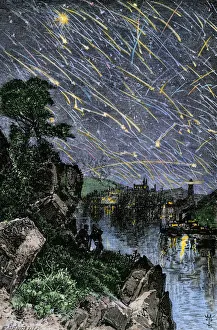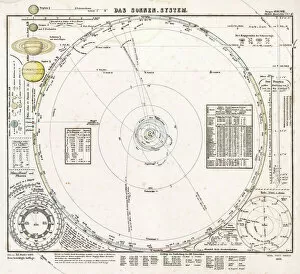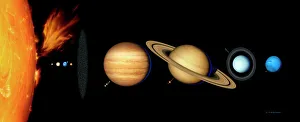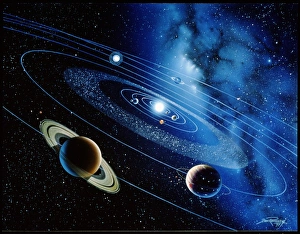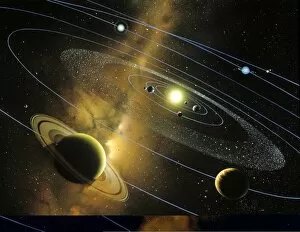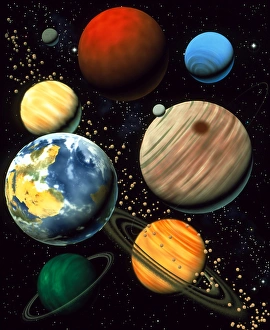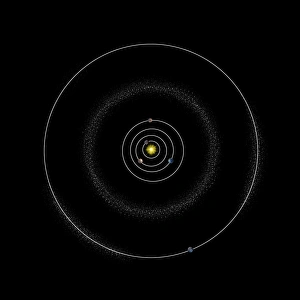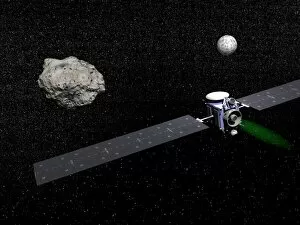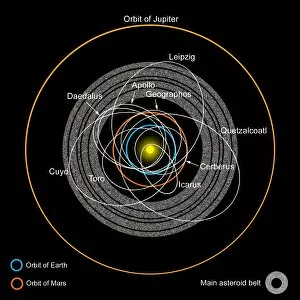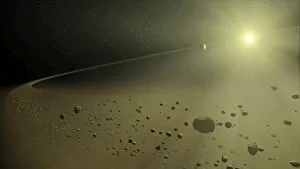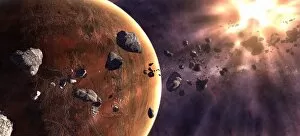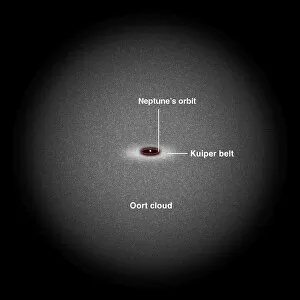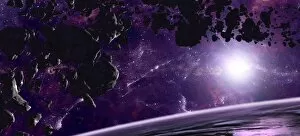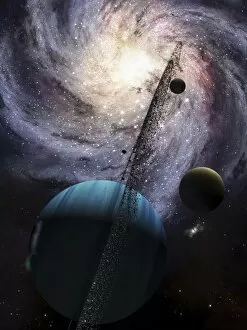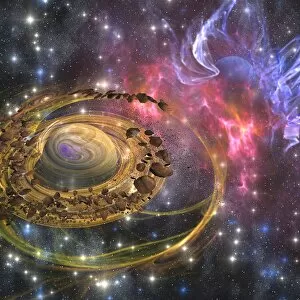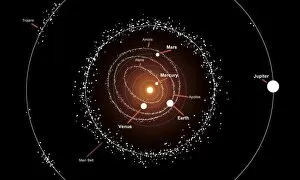Asteroid Belt Collection
The asteroid belt, a fascinating feature of our Solar System, has captivated astronomers and artists alike
All Professionally Made to Order for Quick Shipping
The asteroid belt, a fascinating feature of our Solar System, has captivated astronomers and artists alike. From ancient depictions to modern computer-generated artwork, the asteroid belt continues to inspire awe and curiosity. In 1833, a meteor shower over the mighty Mississippi River mesmerized onlookers as streaks of light illuminated the night sky. This celestial event served as a reminder of the countless asteroids that populate the asteroid belt. A solar system map from 1853 showcased this unique region between Mars and Jupiter where thousands of asteroids reside. It highlighted their orbits and positions within our cosmic neighborhood. Artistic renditions often depict Earth and its Moon alongside dwarf planets like Ceres, emphasizing their relationship within the vastness of space. These illustrations remind us that even small celestial bodies play significant roles in shaping our understanding of the universe. The Sun takes center stage in many compositions featuring its planets orbiting around it harmoniously. Such visual representations allow us to appreciate how these planetary bodies coexist within our Solar System's grand design. One captivating artwork portrays an asteroid belt encircling Vega, a bright star located in another part of our galaxy. This imaginative depiction invites contemplation about similar formations beyond what we know about our own Solar System. From detailed renderings to abstract interpretations, various artworks have attempted to capture both scientific accuracy and artistic expression when portraying the wonders of our solar system. They serve as reminders that there is still much left for us to explore beyond what meets the eye. Computer-generated imagery offers yet another perspective on this intricate network of celestial objects by showcasing each planet's unique characteristics with stunning detail. These visuals bring science fiction-like visions into reality while deepening our appreciation for planetary diversity. As we gaze upon these artistic creations depicting solar systems past or imagined futures, we are reminded not only of humanity's relentless pursuit for knowledge but also how interconnected everything is - from tiny asteroids dancing among themselves in distant belts to giant gas giants dominating their orbits.


